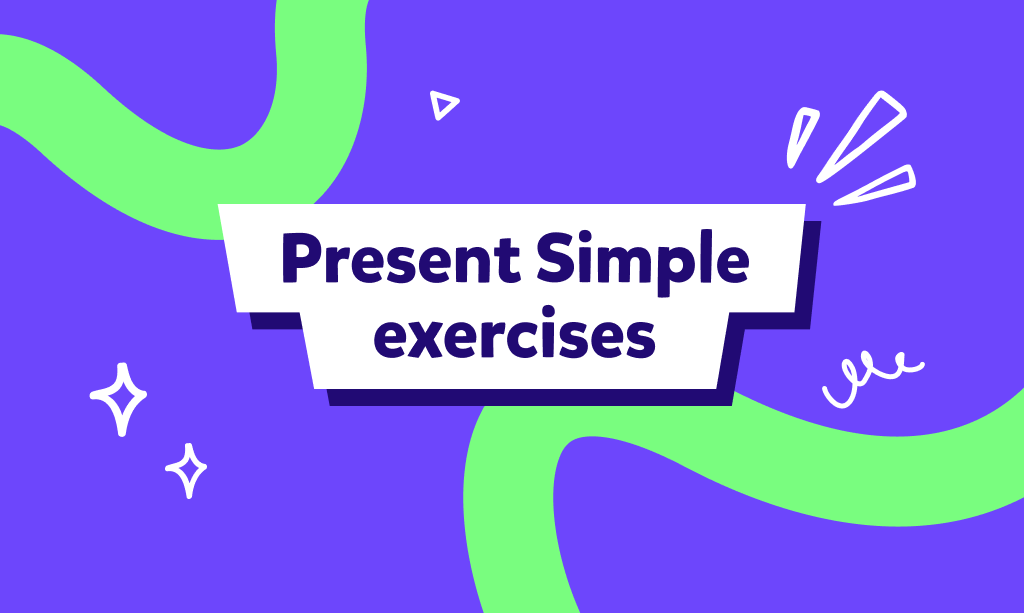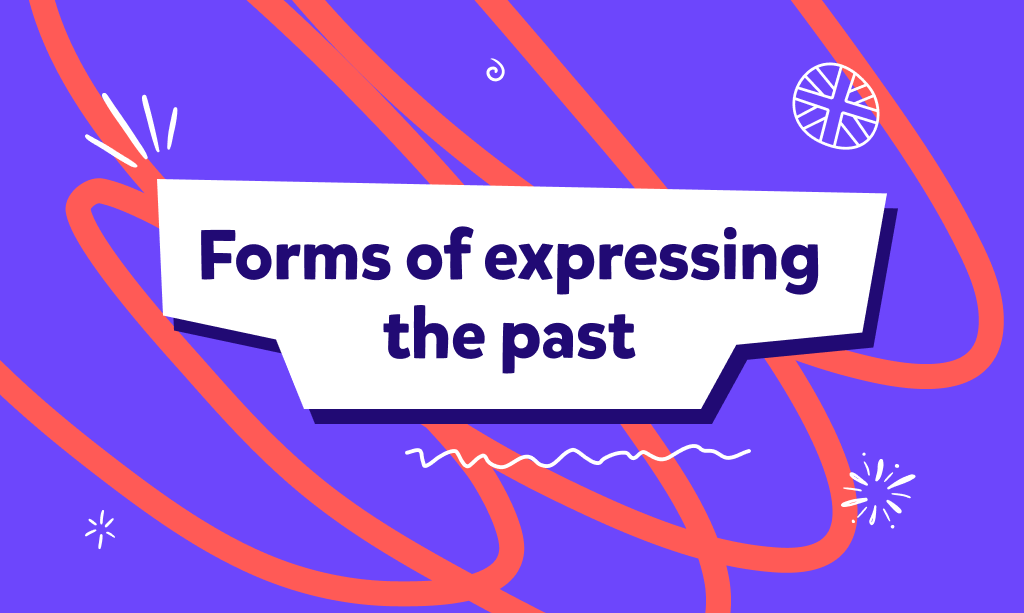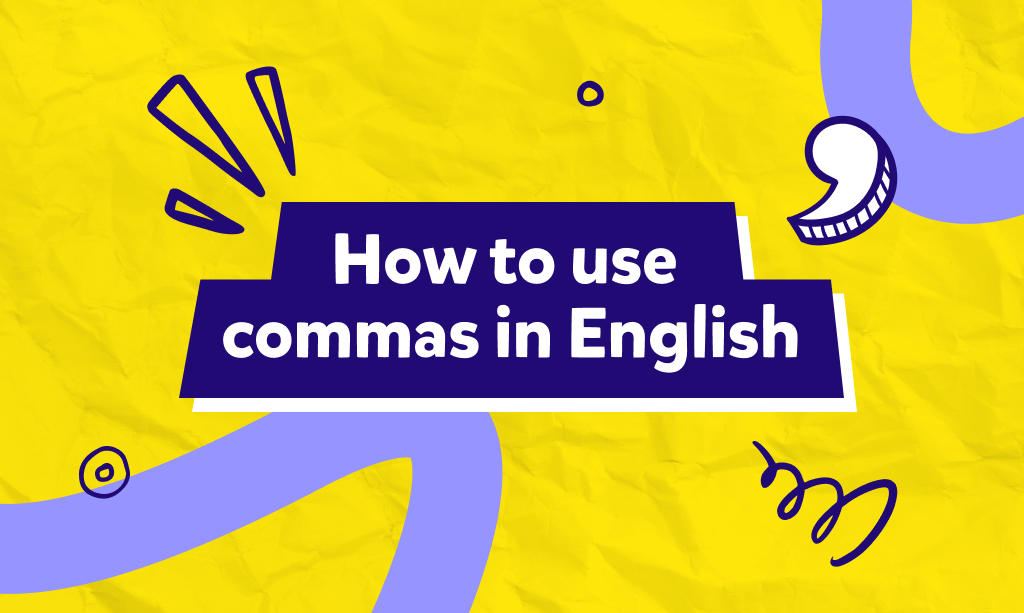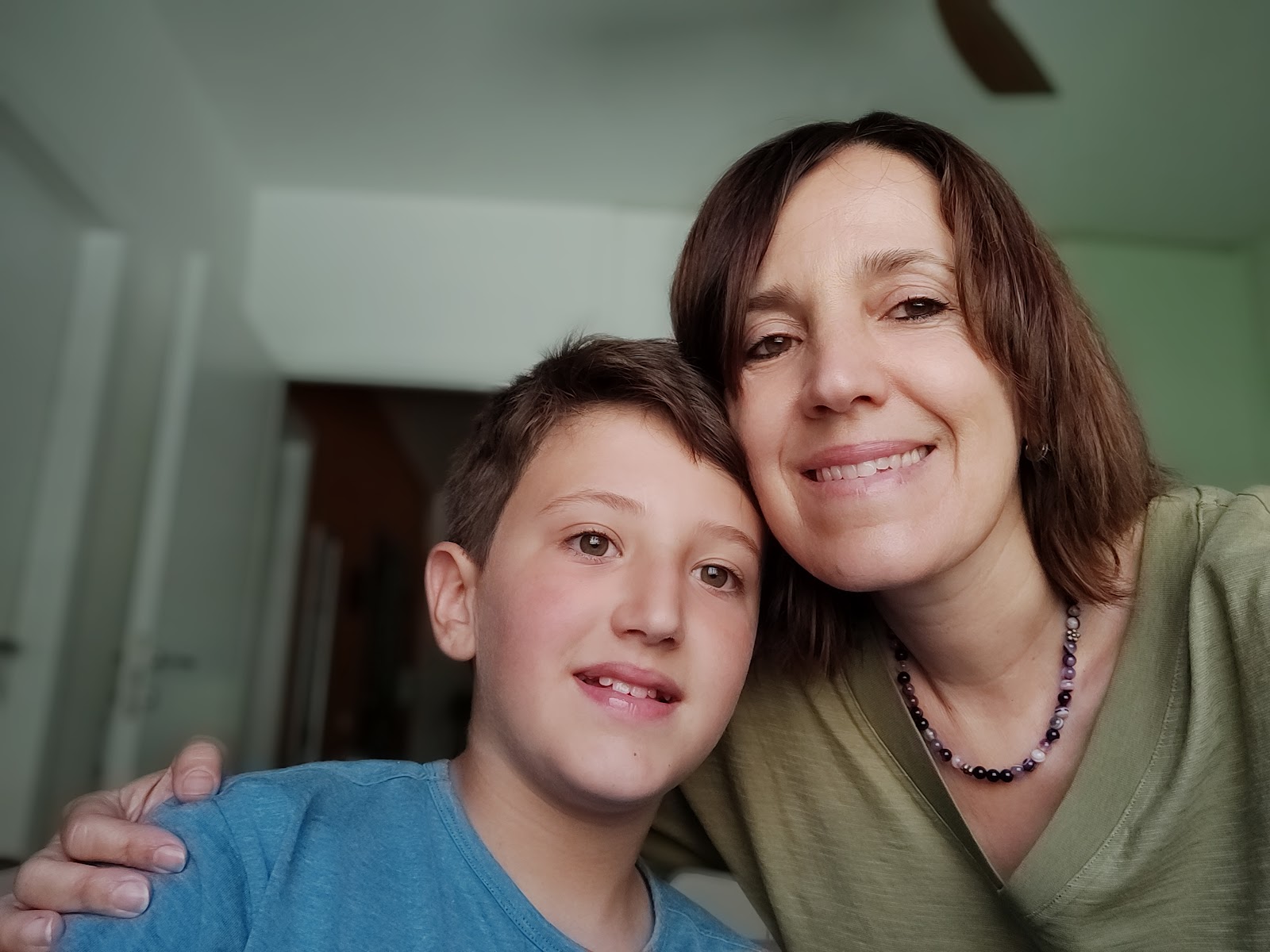- Present Simple: quando si usa e come si forma
- Esercizi sul Present Simple facili
- Esercizi con il Present Simple: le variazioni ortografiche
- Esercizi sul Present Simple: la forma negativa
- Frasi interrogative con il Present Simple
- Present simple vs Present Continuous
- Present Simple: trova l’errore
- Frasi con il Present Simple da tradurre in italiano
- Esercizi sul Present Simple con gli avverbi di frequenza
- Esercizi sul Present Simple: riepilogo
Se cerchi un modo semplice per ripassare il Present Simple in inglese con esercizi interattivi, sei nel posto giusto. Abbiamo preparato 100 esercizi in inglese sul Present Simple con soluzioni. Ti saranno utili per imparare a usare il Present Simple anche nella forma interrogativa e negativa, per ripassare le variazioni ortografiche e per sapere con sicurezza quando usare il Present Simple e quando il Present Continuous.
Esercitarsi online è più divertente che fare esercizi su un libro, specialmente per bambini e bambine. Dai un’occhiata ai corsi di inglese per bambini Novakid: le lezioni sono individuali, gli insegnanti tutti madrelingua e non servono né libri né quaderni.
Present Simple: quando si usa e come si forma
Nel nostro articolo sul Present Simple trovi tutte le spiegazioni che ti servono su questo tempo verbale: come si forma, quando si usa. Qui ricordiamo brevemente che il Present Simple è uno dei tempi verbali fondamentali in inglese che corrisponde al presente indicativo in Italiano.
Il Present Simple è il primo tempo verbale che impariamo in inglese e lo usiamo per parlare di routine quotidiane, fatti generali o stati d’animo. Formare il Present Simple è molto facile: si usa la forma base del verbo, cioè l’ infinito senza “to”. Esempio: I play soccer (Io gioco a calcio). Solo per la terza persona singolare (He, She, It) si aggiunge una “s”: He plays soccer (Lui gioca a calcio). Queste sono le forme verbali corrette in base alla persona e al numero.
Mettiti alla prova e fai i nostri 100 esercizi sul Present Simple online.
Esercizi sul Present Simple facili
They (to play) ____ basketball every Saturday. 
They play basketball every Saturday.
He (to go) ____ to school by bus. 
He goes to school by bus.
I (to eat) ____ breakfast in the morning. 
I eat breakfast in the morning.
You (to read) ____ books before bed. 
You read books before bed.
The dog (to bark) ____ at strangers. 
The dog barks at strangers.
She (to like) ____ ice cream. 
She likes ice cream.
We (to watch) ____ movies on weekends. 
We watch movies on weekends.
My sister (to study) ____ French at school. 
My sister studies French at school.
It (to rain) ____ a lot in spring. 
It rains a lot in spring.
He (to play) ____ the guitar very well. 
He plays the guitar very well.
Esercizi con il Present Simple: le variazioni ortografiche
Abbiao visto che nel Present Simple in inglese si aggiunge una “s” alla terza persona singolare. Questo a volte rende necessari dei cambiamenti ortografici, cioè dei cambiamenti nello spelling. Ecco la regola:
- se il verbo termina in “o”,“s”, “sh”, “ch” o “x”, si aggiunge “es” (ad esempio, go diventa he goes e wash diventa he washes).
- se il verbo termina in “y” preceduta da consonante, la “y” diventa in “ies” (ad esempio, cry diventa he cries)
Se il verbo termina in “y” preceduta da vocale, invece, non c’è nessuna variazione e si aggiunge semplicemente la “s” (ad esempio, play diventa he plays).
Ecco alcuni esercizi sul Present Simple e le variazioni ortografiche, per mettere in pratica queste regole di ortografia.
He (to go) ____ to the gym every day. 
He goes to the gym every day.
She (to wash) ____ the dishes after dinner. 
She washes the dishes after dinner.
The baby (to cry) ____ when he is hungry. 
The baby cries when he is hungry.
My brother (to play) ____ football on weekends. 
My brother plays football on weekends.
She (to study) ____ hard for her exams. 
She studies hard for her exams.
He (to do) ____ his homework every evening. 
He does his homework every evening.
The cook (to mix) ____ the ingredients for the cake. 
The cook mixes the ingredients for the cake.
Esercizi sul Present Simple: la forma negativa
Adesso che hai fatto un po’ di esercizi con il Present Simple nelle frasi affermative, vediamo la forma negativa del Present Simple. Per fare una frase negativa al Present Simple devi usare l’ausiliare “do”seguito da “not”, spesso abbreviato in “don’t”. Esempio: I don’t like pizza (Non mi piace la pizza)
Per la terza persona (“he”, “she” e “it “) si usa “does not” o “doesn’t”.
He doesn’t play soccer (Lui non gioca a calcio)
Nota che la “s” si aggiunge solo al do, e non anche al verbo.
Ecco 10 esercizi con il Present Simple nella forma negativa. Completa gli spazi vuoti con don’t o doesn’t:
I ____ like coffee in the morning. 
I don’t like coffee in the morning.
She ____ play basketball on weekends. 
She doesn’t play basketball on weekends.
They ____ go to school by bus. 
They don’t go to school by bus.
He ____ read books before bed. 
He doesn’t read books before bed.
We ____ eat meat. 
We don’t eat meat.
It ____ rain much in summer. 
It doesn’t rain much in summer.
You ____ need to wake up early tomorrow. 
You don’t need to wake up early tomorrow.
My brother ____ watch TV at night. 
My brother doesn’t watch TV at night.
They ____ know the answer to the question. 
They don’t know the answer to the question.
She ____ enjoy playing video games. 
She doesn’t enjoy playing video games.
Frasi interrogative con il Present Simple
Per fare una frase interrogativa nel Present Simple in inglese, si usa l’ausiliare “do” o “does” ( per la terza persona singolare) all’inizio della frase, seguito dal soggetto e dal verbo nella forma base. Per esempio: Do you like pizza? ( Ti piace la pizza?) oppure Does he play soccer? (Lui gioca a calcio?). Fai pratica con questi 10 esercizi sul Present Simple nelle frasi interrogative. Se vuoi approfondire, leggi il nostro articolo sulle frasi interrogative in inglese.
____ you like pizza? 
Do you like pizza?
____ Paolo play soccer? 
Does Paolo play soccer?
____ they go to the gym every day? 
Do they go to the gym every day?
____ Maria study French? 
Does Maria study French?
____ we need more milk? 
Do we need more milk?
____ it rain often in spring? 
Does it rain often in spring?
____ your parents live in London? 
Do your parents live in London?
____ she have a cat? 
Does she have a cat?
____ you work on weekends? 
Do you work on weekends?
____ your brother like reading books? 
Does your brother like reading books?
Present simple vs Present Continuous
Ti capita di confonderti tra Present Simple e Present Continuous? In questo articolo trovi una spiegazione completa di quando usare il Present Simple e quando il Present Continuous.
Qui ricapitoliamo brevemente la differenza tra i due tempi. Il Present Simple si usa per descrivere azioni abituali, fatti generali o verità universali. Per esempio: I play soccer every weekend (Gioco a calcio ogni fine settimana) oppure Water boils at 100°C (L’acqua bolle a 100 gradi) per esprimere una verità scientifica.
Il Present Continuous, invece, si usa per parlare di azioni che stanno accadendo in questo momento o in questo periodo. Ad esempio, I am playing soccer right now significa che stai giocando a calacio proprio adesso. Oppure She is studying for her exams these days indica che lei sta studiando in questo periodo.
In sintesi, il Simple Present è per abitudini e fatti generali, mentre il Present Continuous si riferisce ad azioni in corso o temporanee. Tutto chiaro? Prova a fare questi esercizi sul Present Simple vs Present Continuous.
I (play / am playing) soccer every weekend. 
I play soccer every weekend.
Luna (is working / works) at the moment. 
Luna is working at the moment
We (eat / are eating) lunch right now. 
We are eating lunch right now.
They (are studying / study) English every day. 
They study English every day.
He (is driving / drives) to work every morning. 
He drives to work every morning.
Look! It (is raining / rains) outside. 
Look! It is raining outside.
My brother (plays / is playing) video games on weekends. 
My brother plays video games on weekends.
I (am not sleeping / don’t sleep) very well these days. 
I am not sleeping very well these days.
They (are having / have) a meeting right now. 
They are having a meeting right now.
You (are working / work) late every Friday. 
You work late every Friday.
She (is taking / takes) the bus to school today. 
She is taking the bus to school today.
We (visit / are visiting) our grandparents every summer. 
We visit our grandparents every summer.
My friend (is reading / reads) a book at the moment. 
My friend is reading a book at the moment.
They (are watching / watch) TV in the evening every day. 
They watch TV in the evening every day.
I (study / am studying) for my exams this week. 
I am studying for my exams this week.
The sun (is setting / sets) in the west. 
The sun sets in the west.
She (is not listening / doesn’t listen) to music right now. 
She is not listening to music right now.
We (are planning / plan) a trip for the holidays. 
We are planning a trip for the holidays.
The train (leaves / is leaving) at 7 PM every day. 
The train leaves at 7 PM every day.
He (is cleaning / cleans) his room every Saturday. 
He cleans his room every Saturday.
Present Simple: trova l’errore
Adesso che hai già fatto 57 esercizi con il Simple Present, sei pronto per un tipo di esercizio un po’ più difficile. In ognuna di queste frasi c’è un errore. Riesci a trovarlo?
She don’t like to swim in the pool. 
She doesn’t like to swim in the pool.
They goes to the cinema every Saturday. 
They go to the cinema every Saturday.
He play soccer every weekend. 
He plays soccer every weekend.
I am not understand the lesson. 
I don’t understand the lesson.
The cat catch mice every night. 
The cat catches mice every night.
We doesn’t eat breakfast in the morning. 
We don’t eat breakfast in the morning.
She go to school by bus. 
She goes to school by bus.
You plays video games every day. 
You play video games every day.
It don’t rain much in summer. 
It doesn’t rain much in summer.
My brother like chocolate ice cream. 
My brother likes chocolate ice cream.
Frasi con il Present Simple da tradurre in italiano
Se vuoi fare ancora un po’ di esercizi con il Present Simple in inglese, ecco 15 frasi affermative, negative e interrogative da tradurre in Italiano.
Maria plays the piano. 
Maria suona il pianoforte.
Tom doesn’t like vegetables. 
Tom non ama le verdure.
John and Sarah go to the gym every morning. 
John e Sarah vanno in palestra ogni mattina.
Lisa studies English at school. 
Lisa studia inglese a scuola.
Michael doesn’t watch TV in the evening. 
Michael non guarda la TV di sera.
Does Emma play soccer on weekends? 
Emma gioca a calcio nei fine settimana?
David drinks coffee every day. 
David beve caffè ogni giorno.
The children don’t like to swim in the sea. 
I bambini non amano nuotare nel mare.
Does Anna eat breakfast in the morning? 
Anna fa colazione al mattino?
Robert reads a book every night. 
Robert legge un libro ogni sera.
Samantha doesn’t work on Fridays. 
Samantha non lavora il venerdì.
Do Peter and Lucy enjoy hiking? 
Peter e Lucy amano fare escursioni?
Julia sings beautifully. 
Julia canta magnificamente.
Mark doesn’t ride his bike to school. 
Mark non va a scuola in bicicletta.
Does Clara visit her grandparents every Sunday? 
Clara visita i suoi nonni ogni domenica?
Esercizi sul Present Simple con gli avverbi di frequenza
Continua ad esercitarti con il Present Simple e gli avverbi di frequenza. Qui trovi un approfondimento sugli indicatori temporali in inglese. Gli avverbi di frequenza, in particolare, indicano quanto spesso un’azione si ripete. I principali avverbi di frequenza in inglese sono: always (sempre), usually (di solito), often (spesso), sometimes (a volte), rarely (raramente), never (mai).
Con il Present Simple, gli avverbi di frequenza si mettono prima del verbo. Per esempio: She always drinks coffee in the morning (Lei beve sempre caffè al mattino.)
Do you usually go to the gym? (Vai in palestra di solito?) I don’t usually read in bed (In genere non leggo a letto).
Ecco alcuni esercizi sul Present Simple con gli avverbi di frequenza:
Samantha (to go, usually) ____ to the gym on Mondays. 
Samantha usually goes to the gym on Mondays.
Daniel (to eat, always) ____ breakfast at 7 AM. 
Daniel always eats breakfast at 7 AM.
The kids (to play, often) ____ outside after school. 
The kids often play outside after school.
Jessica (to watch, sometimes) ____ movies on weekends. 
Jessica sometimes watches movies on weekends.
Michael (not do, often) ____ his homework in the evening. 
Michael doesn’t often do his homework in the evening.
Laura (not go, usually) ____ to the park on Saturday. 
Laura doesn’t usually go to the park on Saturday.
Do they (to play, usually) ____ soccer on Sundays? 
Do they usually play soccer on Sundays?
Does Sarah (to go, often) ____ to the gym after work? 
Does Sarah often go to the gym after work?
Do you (to study, sometimes) ____ in the library? 
Do you sometimes study in the library?
David (to play, usually) ____ soccer in the summer. 
David usually plays soccer in the summer.
The cat (to sleep, often) ____ on the couch. 
The cat often sleeps on the couch.
Esercizi sul Present Simple: riepilogo
E per completare questa sessione di esercizio sul Present Simple, mettiti alla prova con queste 7 frasi che riassumono tutte le regole che abbiamo incontrato in questi esercizi online sul Present Simple in inglese.
Michael (to go, always) ____ to the cinema on Fridays. 
Michael always goes to the cinema on Fridays.
Jessica (to do, never) ____ her homework in the morning. 
Jessica never does her homework in the morning.
Does Tom (to watch, often) ____ TV in the evening? 
Does Tom often watch TV in the evening?
Do you (to eat, sometimes) ____ pizza for lunch? 
Do you sometimes eat pizza for lunch?
She (to go, usually) ____ to the beach in summer. 
She usually goes to the beach in summer.
He (to do, rarely) ____ his chores on weekends. 
He rarely does his chores on weekends.
Anna (to study, always) ____ for her exams. 
Anna always studies for her exams.
Complimenti! Hai fatto 100 esercizi online sul Present Simple in inglese. Non preoccuparti se hai fatto degli errori: sbagliare è normale, ed è parte del processo di apprendimento.
Ti sono stati utili questi esercizi sul Simple Present in inglese? Facci sapere nei commenti.





































